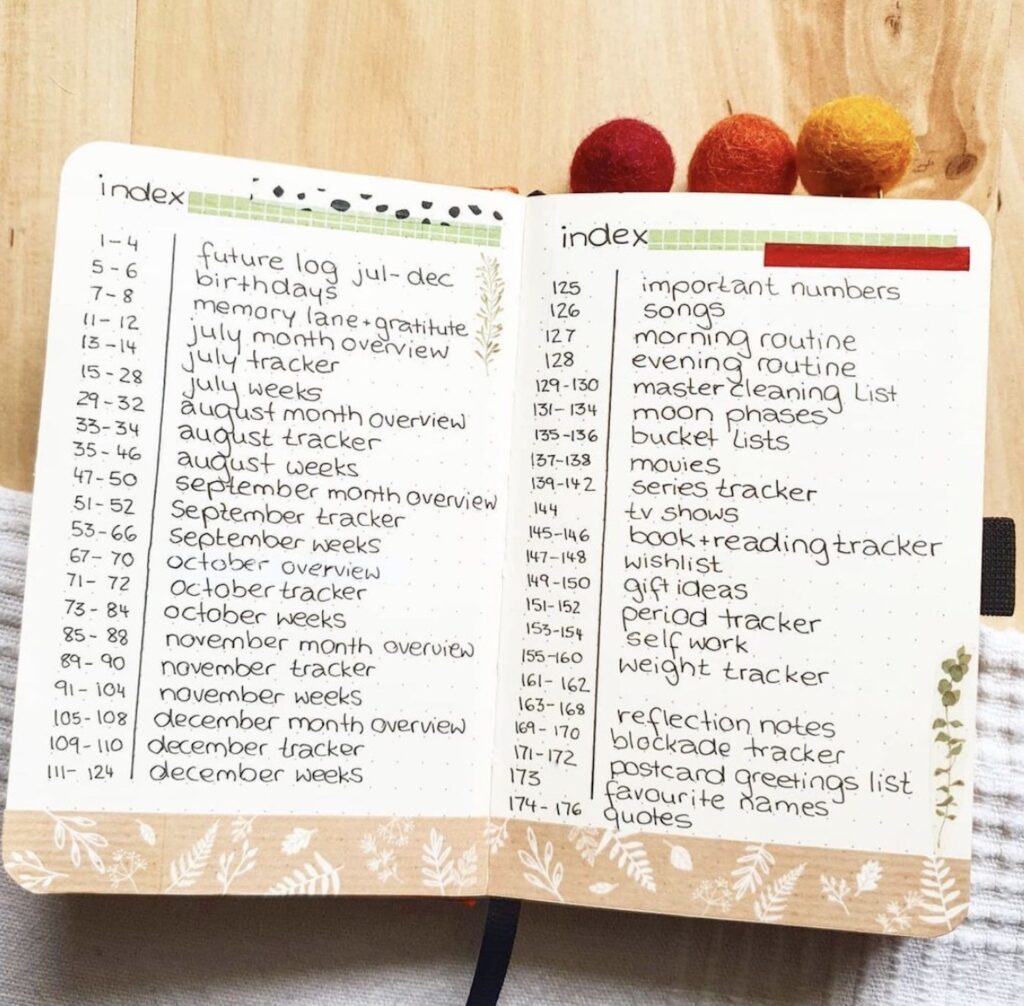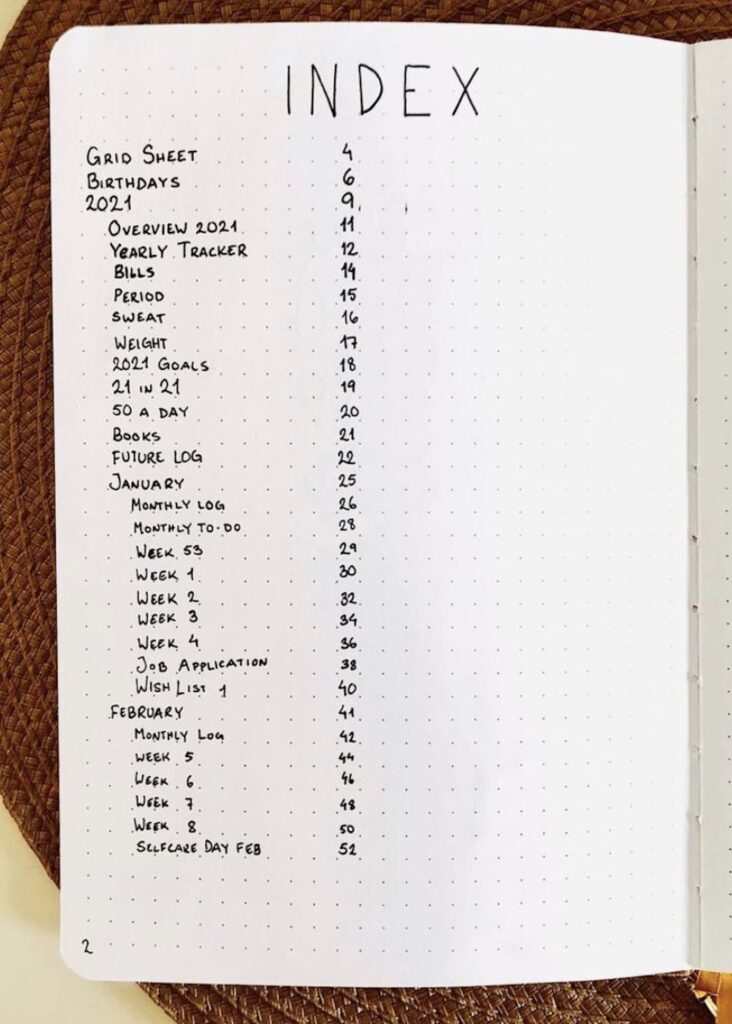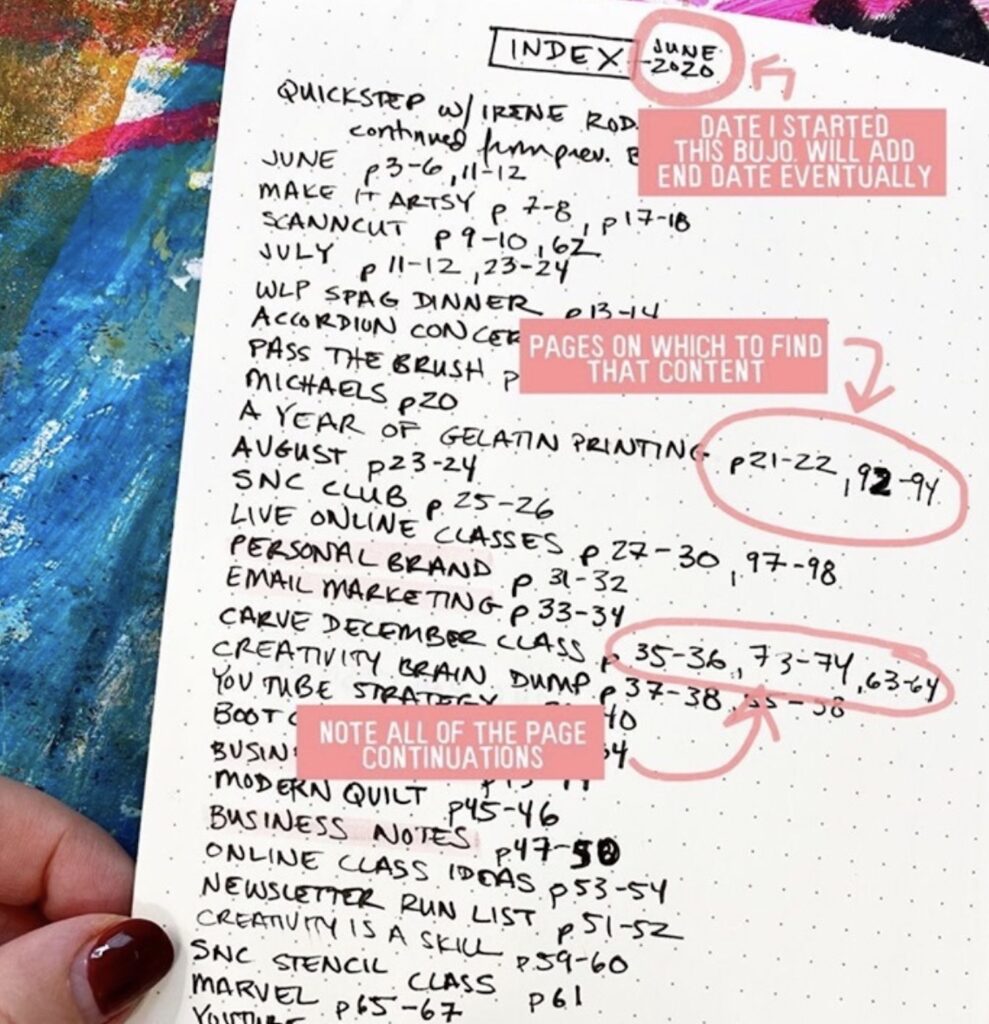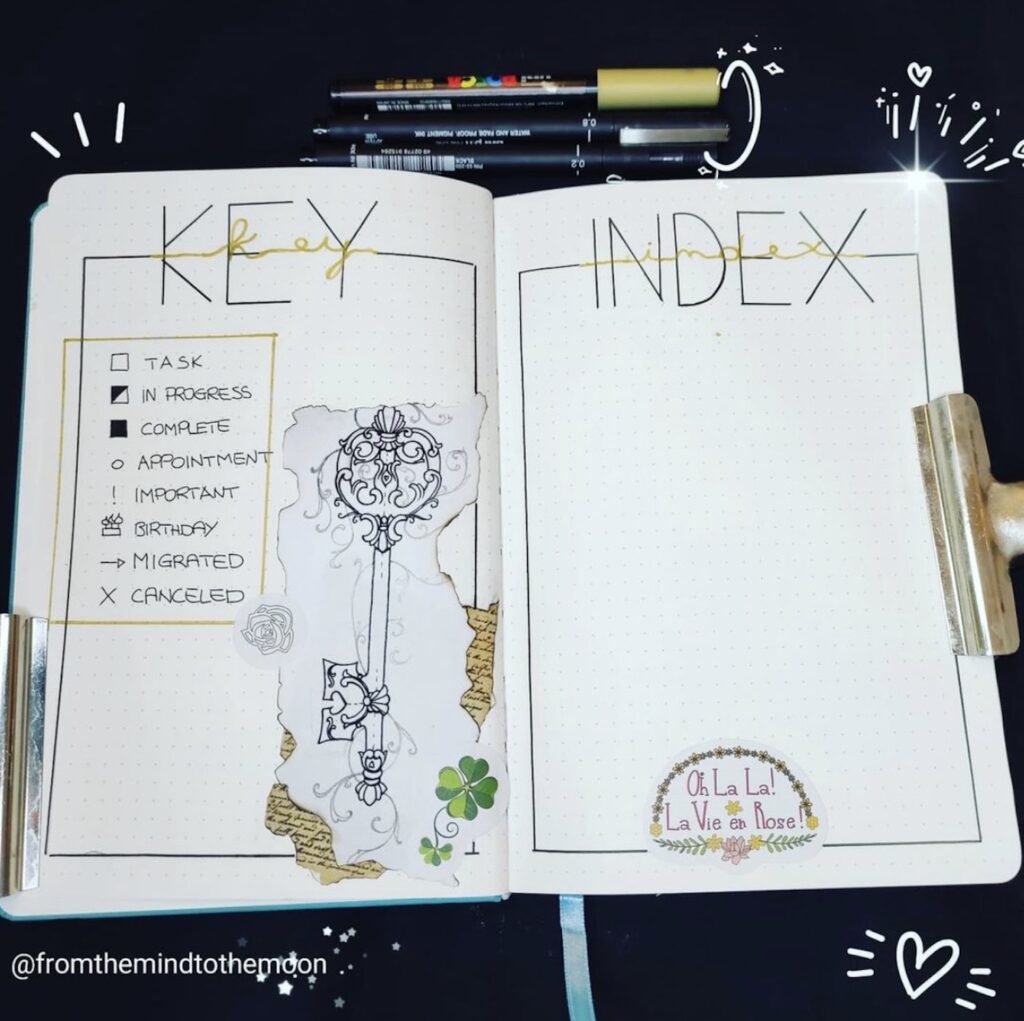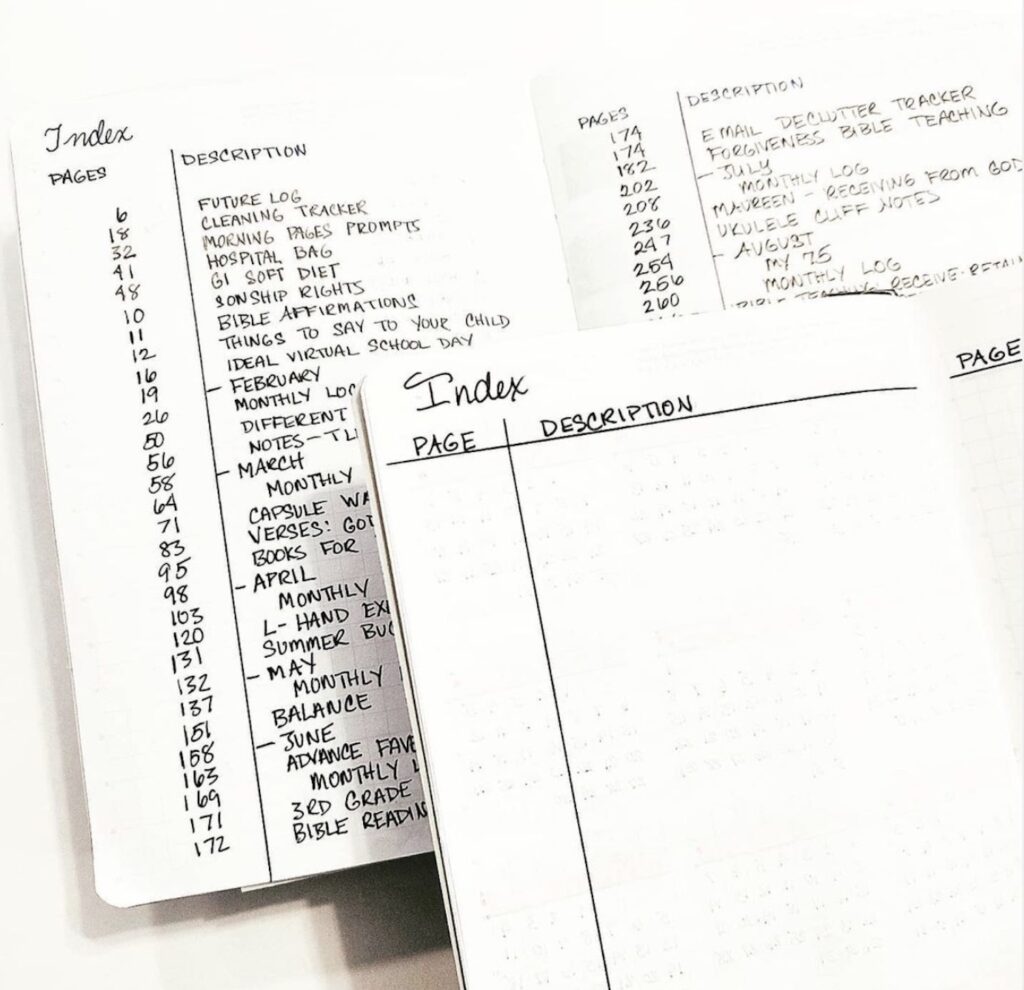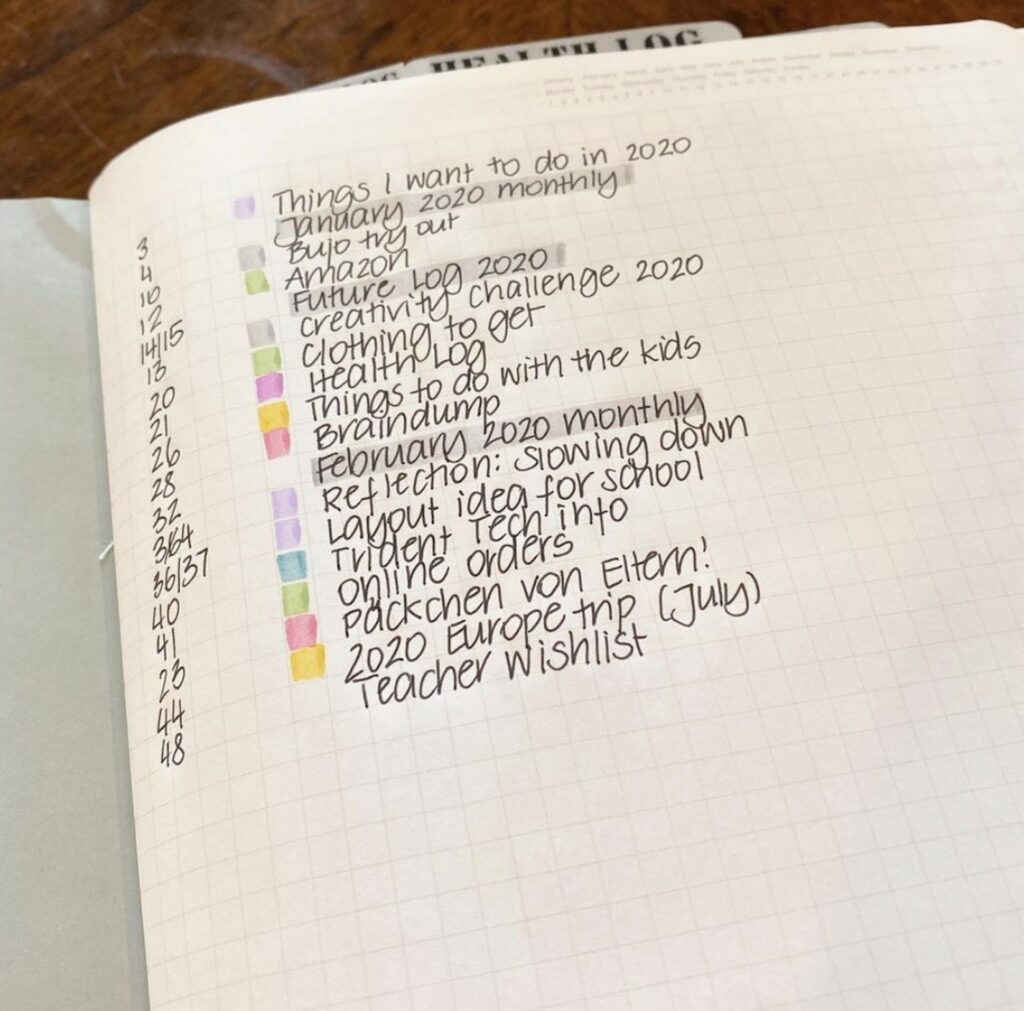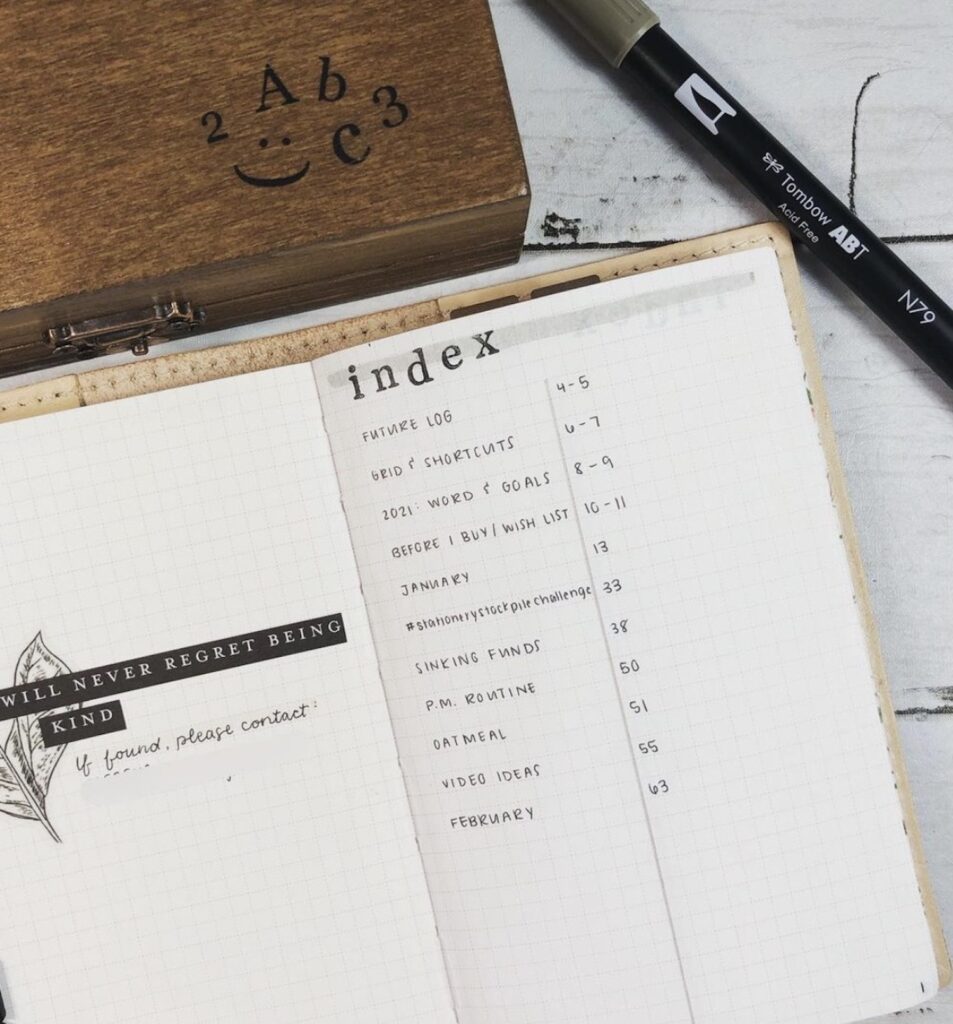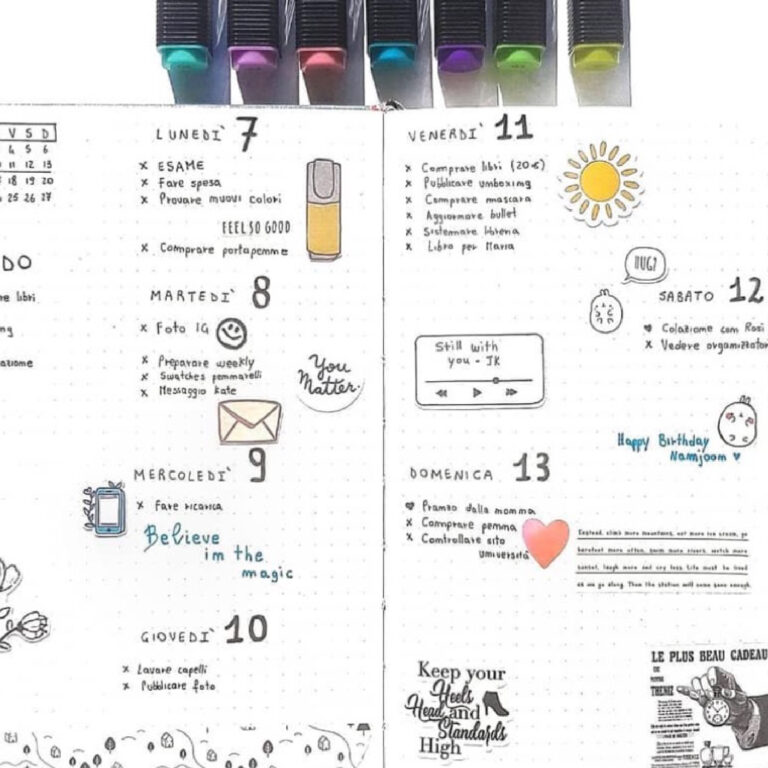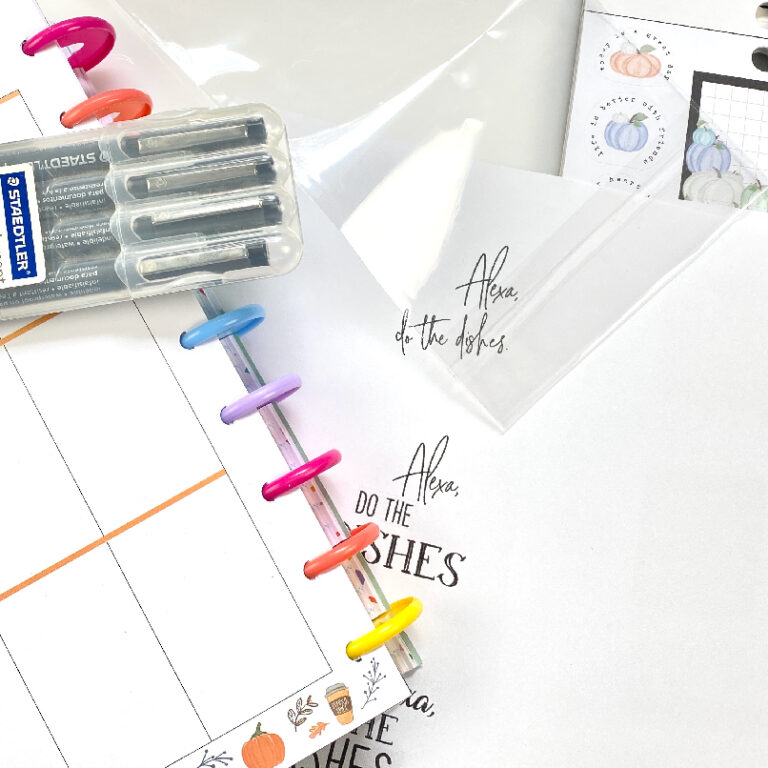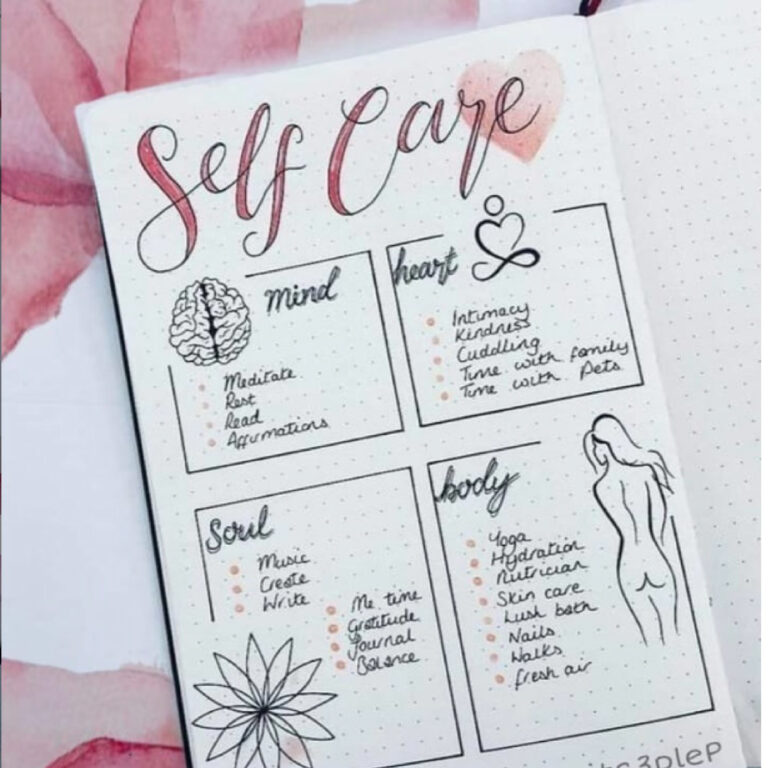Quick and Easy Bullet Journal Index Ideas to Use in Your Bujo
We may earn a small commission for purchases made through affiliate links in this post. For more information go to our Privacy Policy.
A bullet journal index is an essential part of the bujo. It helps you find what you’re looking for quickly and easily. The index can be as simple or complex as you need it to be, but it’s crucial that your bujo has one. Get some bullet journal index ideas generating so you can organize your bujo today.
The first step in creating a good index is to know what information will go into it so that you can create categories for everything. Categories might include the date, topic, location, feelings/thoughts on the topic, start time/end time (if relevant), page number (if applicable).
It may seem like this would take forever to do at first glance – there are just so many things! But don’t worry; once you get started with your own index system and use it for a while, you’ll start to figure out which categories might work best for the information you gather and use. Don’t worry about finding the “perfect” system; there’s no such thing as one bullet journal index that will work for everyone.
You can use several different types of bullets (or symbols) to separate each category; for example, use different types of bullets or symbols in the margins to indicate when something spans multiple pages. You can also add a hard line between each category. If you’re creating a physical bullet journal, draw a small box to separate each section.
What is an Index in a Bullet Journal?
An index in a bullet journal is the list of all topics (with page numbers, if applicable) that are included in your bujo. Your goal should be to make it possible for you to look up any topic quickly and easily when needed, without having to browse through all of your entries or pages! This will help you find what you’re looking for as quickly as possible, which is one of the main goals of a bujo.
Why You Need A Bujo Index?
A bullet journal index can be very helpful in achieving your main goal with your bujo: tracking the past, organizing the present, and planning for the future.
If you’re like me, you probably want to track everything in your bujo – it can be overwhelming when you realize how much information (and pages) is in your bujo. It’s nice to have a list of topics for quick and easy reference so you can see everything at a glance.
Does this mean I need an index if I’m only tracking a few things?
An index is more of a guide than anything else. Whether you only track a few things or track everything (or anything in between), an index will make it easier to find what you’re looking for at any given time, no matter how many topics you have included in your bujo!
What to Index in Your Bullet Journal
The information you choose to include in your bujo index is up to you. You may want to use an index that includes every topic you have included in your bujo, or just a few of the most important topics. It all depends on what works best for you and the information that you’re trying to organize and manage.
If you want to have a list of all the topics in your bujo, that’s fine! Just remember that you’ll need to include a page number if it spans more than one page. Keep a separate piece of paper nearby with a quick reference of the pages numbers so you can easily look up what you’re looking for. You might even want to include a list of the page numbers in your index, in case you need them for quick reference.
If you want an easy way to know which pages a topic spans, add a hard line between each category/topic when creating your bullet journal index. If you’re using a physical bujo, draw a small box next to each category/topic. It’s “okay” if your bullet journal index doesn’t look perfect or fancy – it just needs to work for you!
How To Create A Bullet Journal Index Page?
Create a page in your bujo that includes all the information listed below. Use a separate piece of paper next to your index so you can easily keep track of the page numbers.
Header – include your name (or Bujo title) and the page numbers. You can also include an icon or design to make it look prettier!
Left Hand Side – List all of your current topics/categories. Be sure to indicate whether you’re still working on a topic (e.g., “Work In Progress”) or if you have completed the topic.
Right-Hand Side – List just the page numbers on the right-hand side, this way you have room to add more page numbers if you need to (as things grow and spread in your journal). You can also include icons on each side to make it look pretty!
If possible, I recommend using a separate piece of paper next to your index. This way you can use it as a reference and not have to worry about making mistakes as you write in your topics. It also saves you from flipping back and forth and losing your place. The choice is up to you!
– If you have too many topics/categories to list them all on one index page, just include a statement at the very top of your bullet journal index that says something like, “This is not a full list of all the topics/categories in my bullet journal. If you want to see a complete list, please visit page xxx.”
– If you don’t mind having an “all-in-one” index, just include everything on one page! You can also indicate whether or not certain topics/pages have been completed.
How to Get Your Journal Indexed
You will need to number all the pages in your bullet journal first. This way, when you are writing down categories, topics, or headers, you will have a page number to use as a reference.
Start with a scratch piece of paper. Go through your bullet journal and write down your topics or headers and the page number that they are located on. If you know that section will take up multiple pages, then write down all the corresponding page numbers.
Once you have them all written, transfer the index into your bullet journal in a way that works for you and your design. Be as creative or minimalistic as you like.
How to Journal with an Index in
Indexing is a great way to journal because it helps you quickly find information in your Bullet Journal rather than going through all the pages. If you have topics/headers already numbered, then checking out what’s in a certain category is just a matter of looking up the corresponding page numbers at the top or bottom of each section.
It takes a little bit of organization and planning, but it’s worth the time.
As you add more topics and categories, you can add them to your bullet journal index.
How to Add an Extra Index Page
If you find that your bujo index is getting a bit too long, it might be time to add another index page. I recommend adding a new section behind your current index (or leaving a page blank) if you’re just starting out with bullet journaling, and then once you get more topics/categories you can flow over onto the new page.
Do not try to mix the index pages – it will become a mess and make things difficult to navigate.
Indexing Pages Chronologically
Indexing chronologically basically means that you are going to write the pages of your bullet journal, in the order, they appear in the journal.
For example, if you have a monthly spread on pages 3 and 4, your weekly spread on pages 5-8, and then a habit tracker on page 9, and your books for the month on page 10, you would list them out just like that in your index.
- April monthly spread…pg. 3-4
- weekly spreads…pg. 5-8
- April habit tracker…pg. 9
- April books…pg. 10
Indexing Pages by Entries
Another way to index your bullet journal is by listing out all the entries or topics on a page. Basically, you are going to list out every single thing that has been added for a particular day of the month.
For example, if you have 3 tasks listed in your daily task section and then at the bottom half of the page there is a paragraph describing something that happened on that day, your index entry would be Daily Tasks (3) & Daily Description (1).
If you had more than one drawing, like an analog clock for the time and then flowers to decorate around, you would list each of them as well. Daily Tasks (3) Daily Analog Clock (1) Daily Flowers (2).
Of course, if you want to get more specific than just listing out everything on one page, you can break down your bullet journal index to the actual tasks/drawings/descriptions. It really is up to you!
How to Index Using Symbols and Icons
If you’re not much of a writer, you can use symbols and icons in your bullet journal index instead. It will take up less space and it’s also fun to look through. You could include:
– Stars (indicating that these topics/headers are completed)
– Bullets (indicating a list)
– Highlighters (indicating important topics/headers)
– Dots (in the corner of the page number to show it is in an index)
There are even more options, so go wild and put whatever you like in your bullet journal!
Tips on Using the Index in Your Bujo
Think of your bullet journal as a scrapbook. You can use the index to note down drawings and designs you really like, inspiring quotes/words, or even thoughts on what you want to include in future spreads.
You could also use your bujo index as a diary-like log of what happened each day. Put down the weather, a quote, sketches of what you wore, or an inspirational quote. In fact, this is a great way to see what you actually did each day!
How Many Pages to Devote to Your Index?
This is a hard question to answer. There’s no “right” or “wrong” number of pages, but if you find that your index has become too long and seems difficult to navigate, it might be time to add some more pages.
You could use symbols as mentioned above to indicate which headers have been completed/crossed off. You can even use one symbol on the index page to indicate that no entries have been added yet for that day.
The same goes with icons – you can use different symbols/icons for different purposes so it’s a lot easier on the eyes. For example, a bullet could be used if something was a task or event, a star if it was completed, or a flower if it was something pretty.
Whatever you do, the most important thing to remember is that your bullet journal index should be fun and easy to read!
Bullet Journal Variations for an Index
As a variation for your index, you could add colored tabs to sections and then list out the topic or category and the color of the tab.
Or create sections for each month of the year if you are including the same format for each month and then write down the page numbers for the start of each month.
I create acetate page markers for my planner so I know where I want to turn in my book each time I use it. You can do the same with bookmarks or paper clips and then index based on design, theme, or color.
Whatever you choose to do, it needs to work with your brain and your organizing system. Don’t be afraid to switch it up or try something different if you don’t feel something is working for you.
Bullet Journal Index Ideas
If you don’t want to create your own indexing system from scratch, there are already some great ones out there. Look through these examples to find your next bullet journal index ideas.

